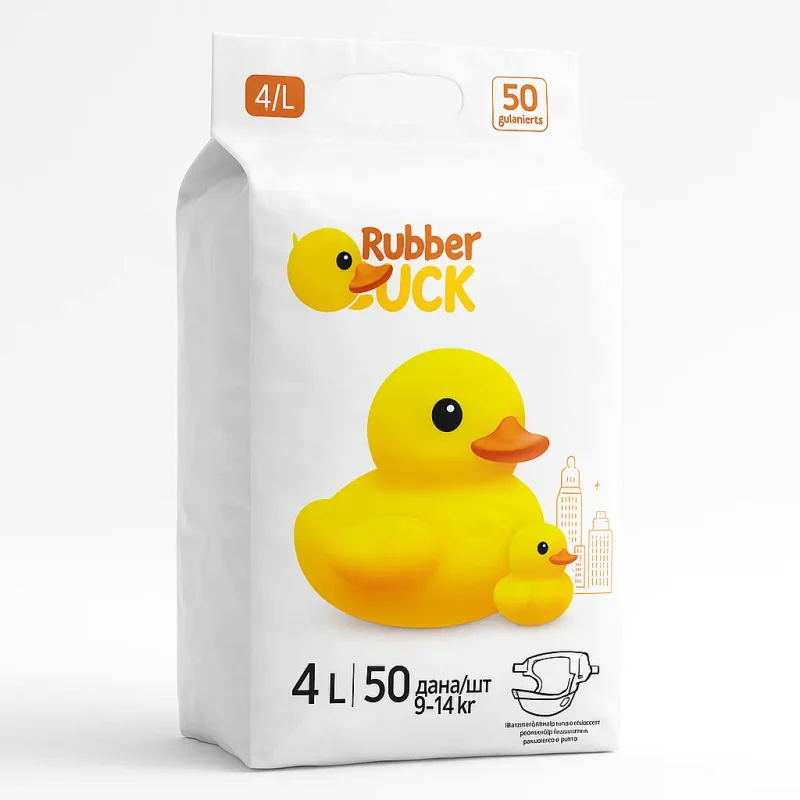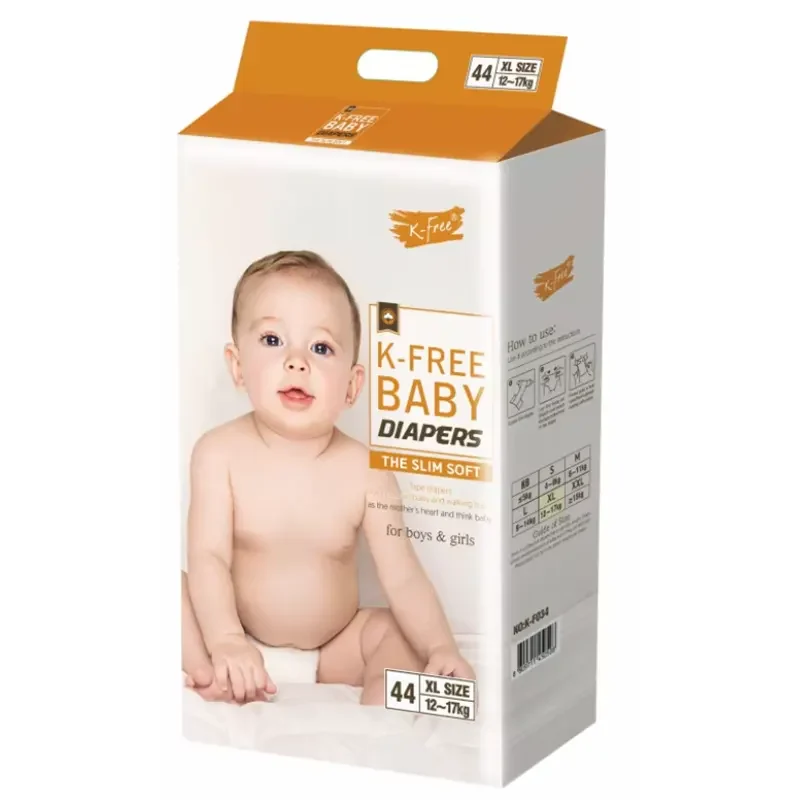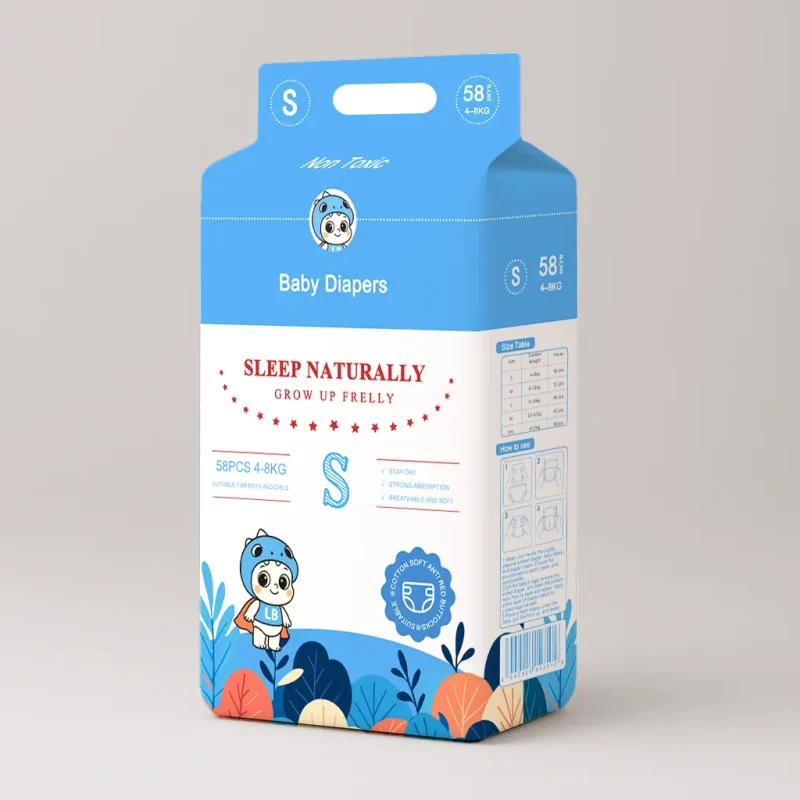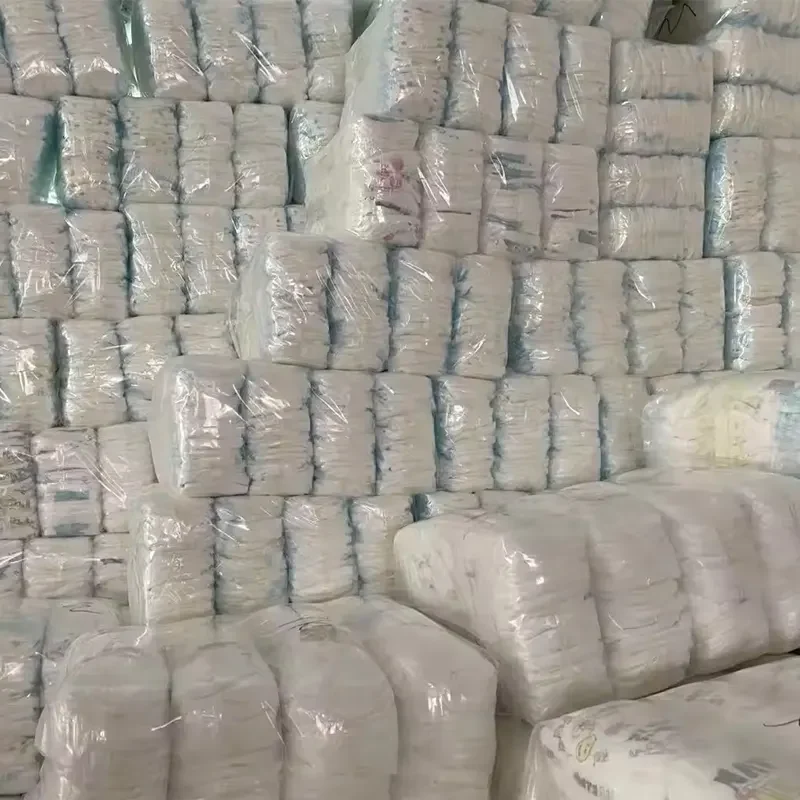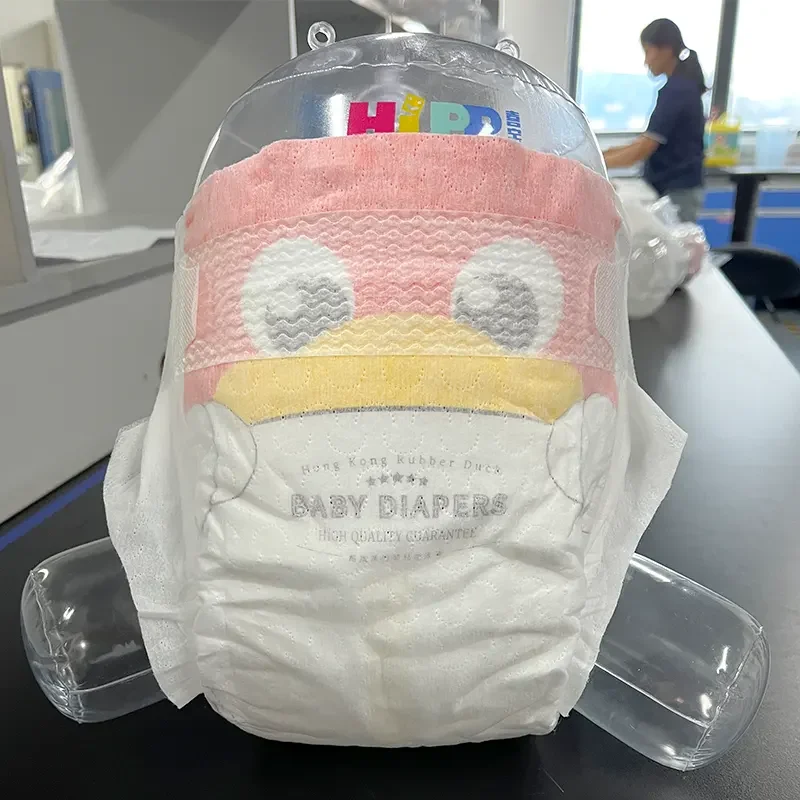Rash Free Baby Diapers
- Rash Free
- Strong ADL
- Size1-7
- Breathable
- Factory Price
- High Quality
Details of our Rash Free Baby Diapers
Disposable Baby Diaper | |||||
Size | Length | Width | Baby Weight | Weight/pc | Packaging |
NB | 360±5mm | 280±5mm | below 5kg | 15.51±2g | 64pcs/bag, 2 bags/ctn |
S | 390±5mm | 325±5mm | 4-8kg | 18.01±2g | 56pcs/bag, 2 bags/ctn |
M | 440±5mm | 325±5mm | 6-11kg | 21.76±2g | 48pcs/bag, 2 bags/ctn |
L | 490±5mm | 325±5mm | 9-14kg | 27±2g | 42pcs/bag, 2 bags/ctn |
XL | 530±5mm | 325±5mm | 12-17kg | 30±2g | 38pcs/bag, 2 bags/ctn |
Why Rash Happens & How to Stop It
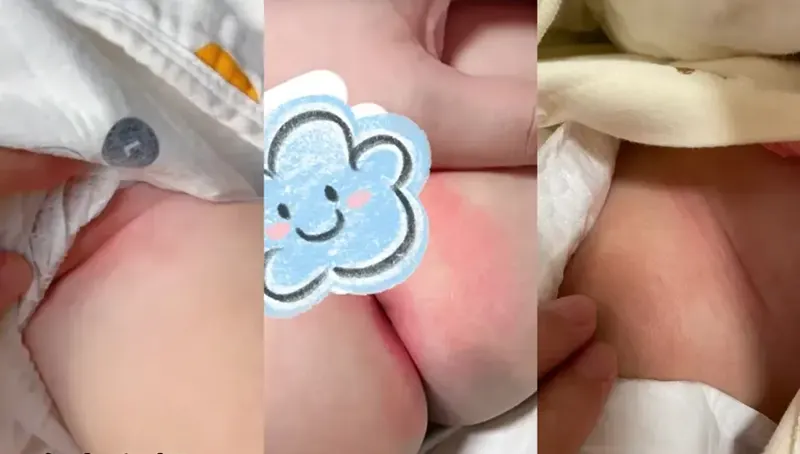
Why does baby skin develop a diaper rash?
Irritation from urine and stool
Ammonia in urine and digestive enzymes in stool can irritate delicate skin. If a diaper isn’t changed promptly, prolonged contact can lead to redness.
Warm, humid conditions
Poorly breathable diapers or infrequent changes keep the diaper area damp, weaken the skin barrier, and raise the risk of infection.
Diaper materials
Some diapers use rough fibers, lower absorbency, or irritating additives, which may trigger allergies or friction damage.
Improper cleaning
Over-cleaning can strip the skin’s natural protective oils, while under-cleaning leaves urine and stool residues—both can cause diaper rash.
How to prevent diaper rash from diapers
Change frequently
Newborns: every 2 hours; after one month: every 3–4 hours; change immediately after any bowel movement.
Clean away urine and stool promptly to reduce irritation.Choose quality diapers
Prefer soft, breathable, highly absorbent products; avoid low-quality or non-breathable materials.
Pick the right size by weight so the fit is snug—not tight—to reduce friction.Gently clean the diaper area
At each change, wipe with 37–40 °C water and a soft towel/cotton wipe. For girls, clean front to back. Avoid harsh rubbing.
Pat dry with a clean towel or cotton wipe to keep skin dry.
Apply a barrier cream
After cleaning and drying, apply an even layer of diaper cream with zinc oxide, petrolatum, etc., to form a protective film that blocks urine and stool.Add “diaper-free” time
Let the skin air out 15–30 minutes, 2–3 times daily. Keep baby warm.Adjust diet if needed
Breastfeeding parents should avoid spicy, irritating foods. For formula-fed babies with diarrhea or suspected lactose intolerance, see a doctor to adjust feeding.
Diaper fabric is a key factor in diaper rash
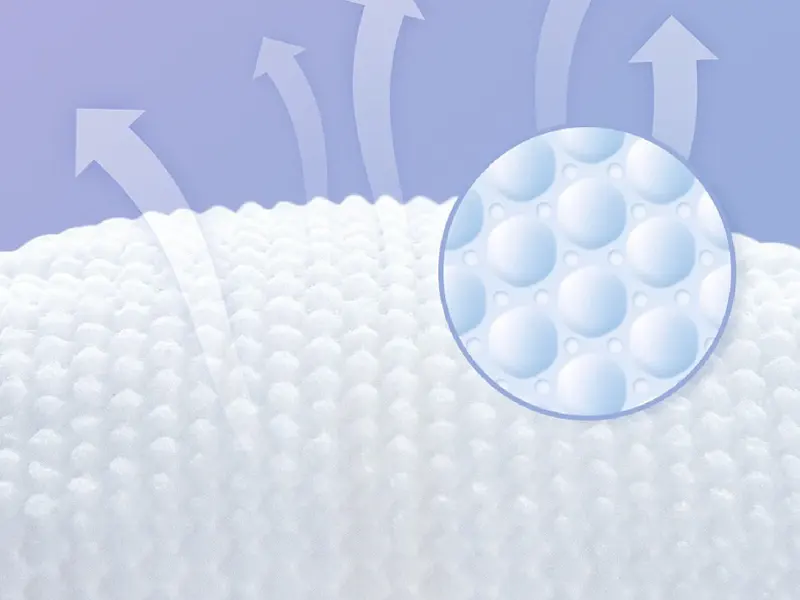
Hot-air nonwoven vs. spunbond nonwoven in diapers
Hot-air nonwoven: High loft, good elasticity, soft handfeel, strong warmth, and good breathability/liquid permeability. However, strength is lower and it can deform more easily.
Spunbond nonwoven: Formed by extruding polymer filaments directly into a web, then thermally bonded under pressure. It offers superior mechanical properties—tensile strength, elongation at break, and tear resistance—with very thin profiles. However, it’s generally less soft and less breathable than hot-air nonwoven.
As a result, premium diapers typically use hot-air nonwoven for the topsheet. Some brands choose spunbond based on market positioning.
Not all hot-air nonwovens are the same
Ultrafine fiber process: Finer pores help block droplets while allowing water vapor to pass—waterproof yet breathable. Standard hot-air nonwovens use coarser fibers with relatively lower breathability, which may feel warmer.
Composite constructions: Dual- or multi-layer hot-air nonwovens increase loft and airflow to reduce heat buildup. Single-layer structures can be denser and slightly less breathable.
Lower basis weight: Lighter and softer with lower friction on skin—more skin-friendly. Too low, however, may compromise strength and durability.
Higher basis weight: Thicker with better warmth, but airflow can drop, increasing stuffiness.
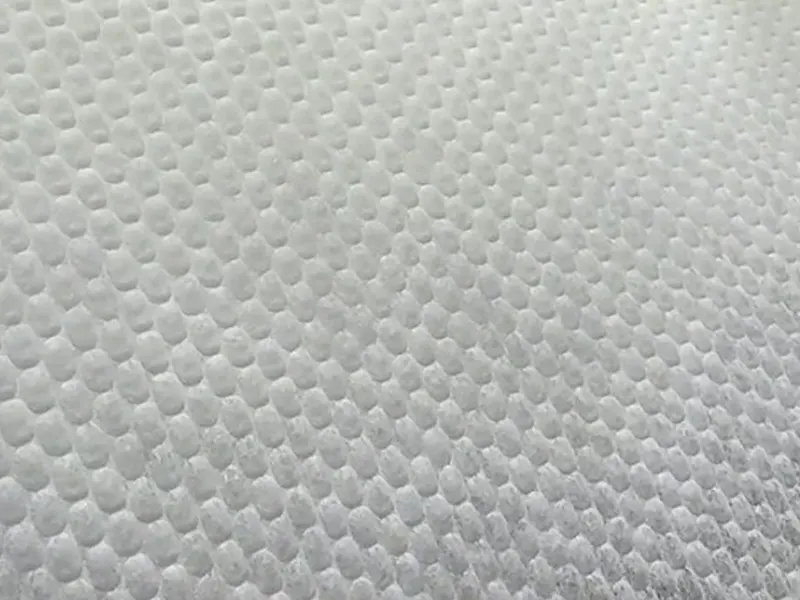
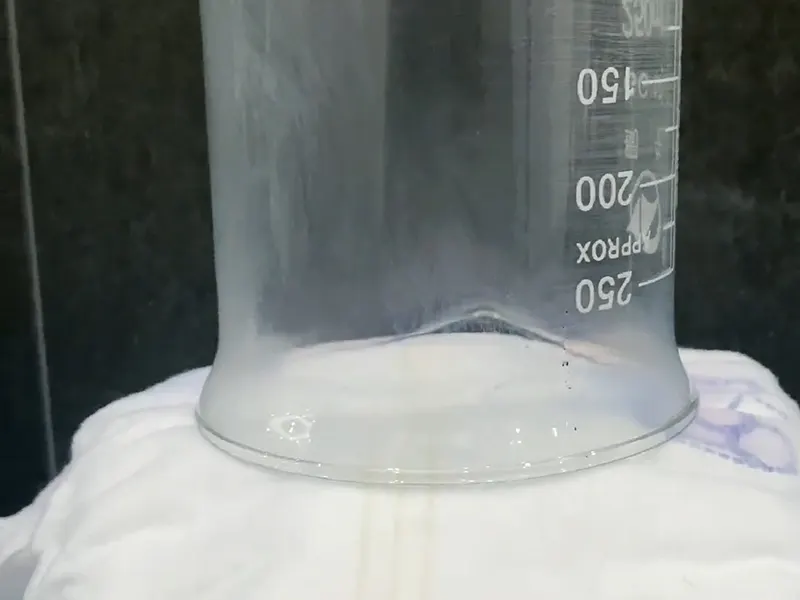
Ultra-thin diapers are more breathable
Many parents worry that “ultra-thin” means less breathable. In fact, when absorbency is ensured, a thinner profile lets air move more freely and reduces heat buildup. To validate this, we use standardized Moisture Vapor Transmission Rate (MVTR) testing to quantify breathability and demonstrate the advantages of an ultra-thin design.
Our diapers use a breathable PE Film
Common PE Bottom Film come in thicknesses such as 1.5 mm, 1.2 mm, 1.0 mm, and 0.8 mm. We prioritize a 0.8 mm ultra-fine PE backsheet—it feels soft, conforms without stiffness or chafing, and features more uniform, finer micropores to vent humidity quickly while effectively blocking liquid leaks.
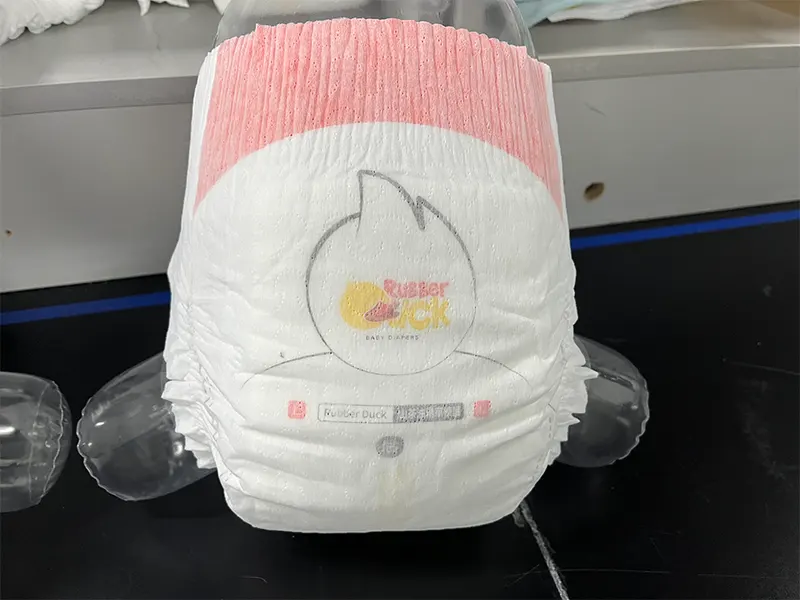
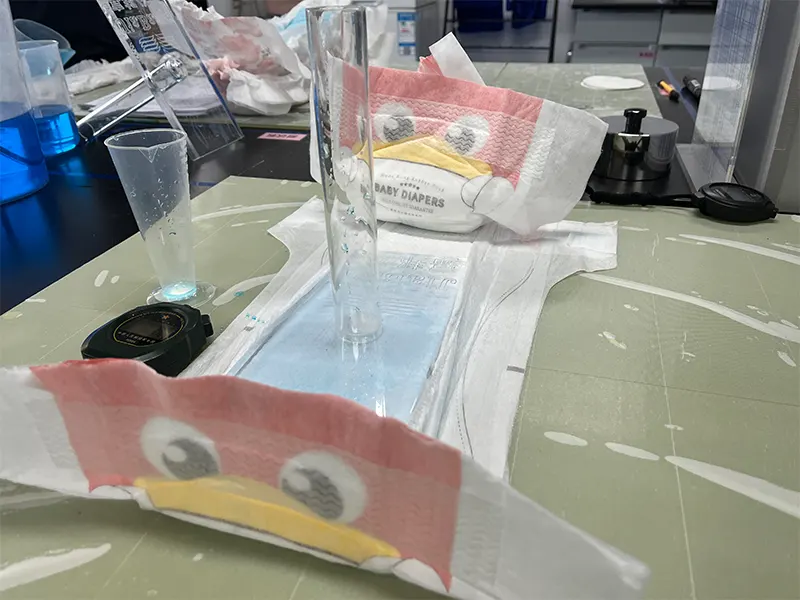
Fast absorption and no re-wet mean less rash
Our design rapidly draws liquid through the topsheet into the core and locks it in, minimizing re-wet. By reducing the time urine stays on the skin, we lower friction, pH shifts, and enzyme contact—all key triggers of irritation. Independent re-wet tests (press-out under load) show drier surfaces after multiple insults, so the skin stays cleaner and more comfortable between changes.
pH Valued
Diapers should ideally have a pH of 4.0 to 7.5, indicating a mild simply acid environment that the and skin environment provide. The skin surface also has beneficial skin micro biomes and a protective acid mantle. With endocrine changes and chemical irritation, the havoc strength ph balance of the skin can change. this balance within ph skin biomes is supported by our pH complement diapers to the skin is caressed by preserved pH balance skins and soft micro. Rapid absorption and breathability complement this delicate, protective level kept.

